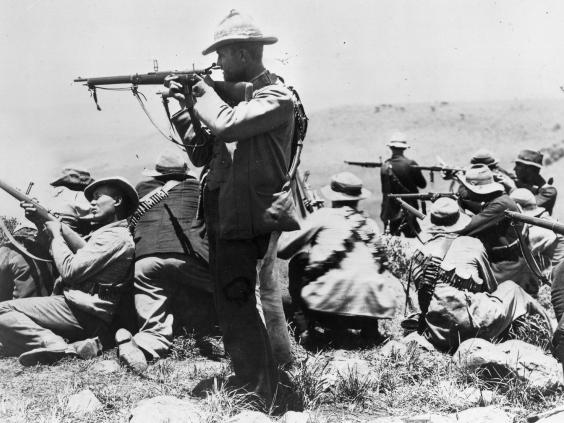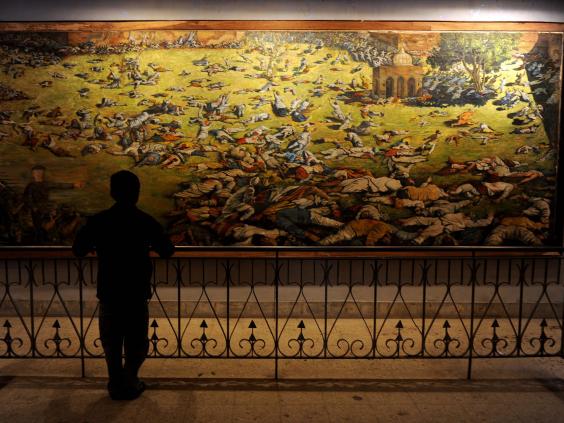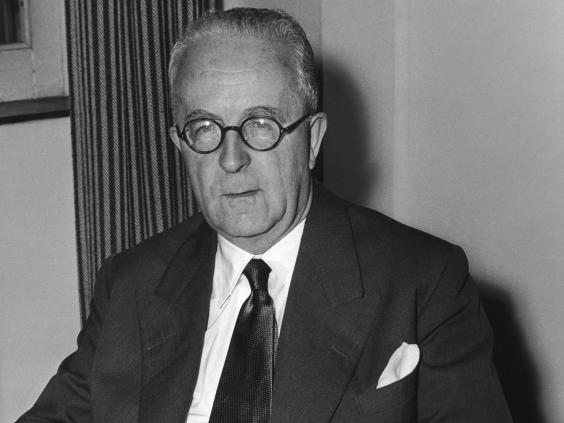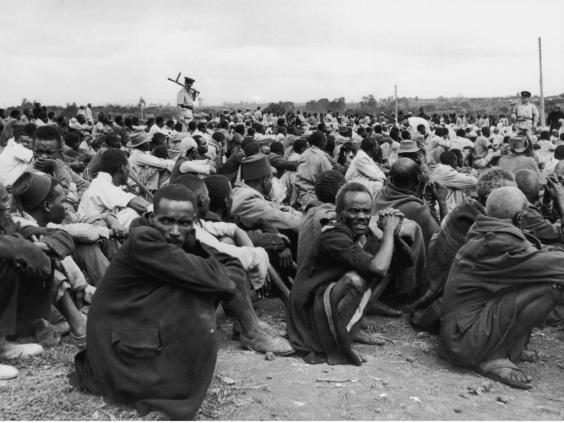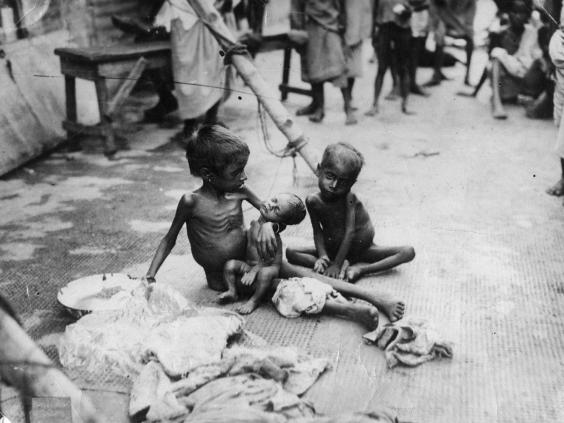by Christian Appy
TomDispatch.com
Or How Patriotism Means Never Having To Say You're Sorry
“Never, never waste a minute on regret. It's a waste of time.”
-- President Harry Truman
Here we are, 70 years after the nuclear obliteration of Hiroshima and
Nagasaki, and I'm wondering if we've come even one step closer to a
moral reckoning with our status as the world's only country to use
atomic weapons to slaughter human beings. Will an American president
ever offer a formal apology? Will our country ever regret the dropping
of “Little Boy” and “Fat Man,” those two bombs that burned hotter than
the sun? Will it absorb the way they instantly vaporized thousands of
victims, incinerated tens of thousands more, and created unimaginably
powerful shockwaves and firestorms that ravaged everything for miles
beyond ground zero? Will it finally come to grips with the “black rain”
that spread radiation and killed even more people -- slowly and
painfully -- leading in the end to a death toll for the two cities
conservatively estimated at more than 250,000?
Given the last seven decades of perpetual militarization and
nuclear “modernization”
in this country, the answer may seem like an obvious no. Still, as a
historian, I've been trying to dig a little deeper into our lack of
national contrition. As I have, an odd fragment of Americana kept coming
to mind, a line from the popular 1970 tearjerker
Love Story:
“Love,” says the female lead when her boyfriend begins to apologize,
“means never having to say you're sorry.” It has to be one of the
dumbest definitions ever to lodge in American memory, since real love
often requires the strength to apologize and make amends.
It does, however, apply remarkably well to the way many Americans
think about that broader form of love we call patriotism. With rare
exceptions, like the 1988
congressional act
that apologized to and compensated the Japanese-American victims of
World War II internment, when it comes to the brute exercise of power,
true patriotism has above all meant never having to say you're sorry.
The very politicians who criticize other countries for not owning up to
their wrong-doing regularly insist that we should never apologize for
anything. In 1988, for example, after the U.S. Navy
shot down
an Iranian civilian airliner over the Persian Gulf killing all 290
passengers (including 66 children), Vice President George H.W. Bush,
then running for president,
proclaimed, “I will never apologize for the United States. Ever. I don't care what the facts are.”
It turns out, however, that Bush's version of American
remorselessness isn’t quite enough. After all, Americans prefer to view
their country as peace-loving, despite having been at war constantly
since 1941. This means they need more than denials and non-apologies.
They need persuasive stories and explanations (however full of
distortions and omissions). The tale developed to justify the bombings
that led to a world in which the threat of human extinction has been a
daily reality may be the most successful legitimizing narrative in our
history. Seventy years later, it’s still
deeply embedded in public memory and
school textbooks,
despite an ever-growing pile of evidence that contradicts it. Perhaps
it’s time, so many decades into the age of apocalyptic peril, to review
the American
apologia for nuclear weapons -- the argument in their defense -- that ensured we would never have to say we're sorry.
The Hiroshima Apologia
On August 9, 1945, President Harry Truman delivered a
radio address
from the White House. “The world will note,” he said, “that the first
atomic bomb was dropped on Hiroshima, a military base. That was because
we wished in this first attack to avoid, insofar as possible, the
killing of civilians.” He did not mention that a second atomic bomb had
already been dropped on Nagasaki.
Truman understood, of course, that if Hiroshima was a “military
base,” then so was Seattle; that the vast majority of its residents were
civilians; and that perhaps 100,000 of them had already been killed.
Indeed, he knew that Hiroshima was chosen not for its military
significance but because it was one of only a handful of Japanese cities
that had not already been firebombed and largely obliterated by
American air power. U.S. officials, in fact, were intent on using the
first atomic bombs to create maximum terror and destruction. They also
wanted to measure their new weapon’s power and so selected the “virgin
targets” of Hiroshima and Nagasaki. In July 1945, Secretary of War Henry
Stimson
informed Truman
of his fear that, given all the firebombing of Japanese cities, there
might not be a target left on which the atomic bomb could “show its
strength” to the fullest. According to Stimson's diary, Truman “laughed
and said he understood.”

The
president soon dropped the “military base” justification. After all,
despite Washington's effort to censor the most graphic images of atomic
annihilation coming out of Hiroshima, the world quickly grasped that the
U.S. had destroyed an entire city in a single blow with massive loss of
life. So the president focused instead on an apologia that would work
for at least the next seven decades. Its core arguments appeared in that
same August 9th speech. “We have used [the atomic bomb] against those
who attacked us without warning at Pearl Harbor,” he said, “against
those who have starved and beaten and executed American prisoners of
war, against those who have abandoned all pretense of obeying
international laws of warfare. We have used it in order to shorten the
agony of war, in order to save the lives of thousands and thousands of
young Americans.”
By 1945, most Americans didn't care that the civilians of Hiroshima
and Nagasaki had not committed Japan's war crimes. American wartime
culture had for years drawn on a long history of “yellow peril” racism
to paint the Japanese not just as inhuman, but as subhuman. As Truman
put it in his diary, it was a country full of
“savages”
-- “ruthless, merciless, and fanatic” people so loyal to the emperor
that every man, woman, and child would fight to the bitter end. In these
years, magazines routinely
depicted
Japanese as monkeys, apes, insects, and vermin. Given such a foe, so
went the prevailing view, there were no true “civilians” and nothing
short of near extermination, or at least a powerful demonstration of
America's willingness to proceed down that path, could ever force their
surrender. As Admiral William “Bull” Halsey
said in a 1944 press conference, “The only good Jap is a Jap who's been dead six months.”
In the years after World War II, the most virulent expressions of
race hatred diminished, but not the widespread idea that the atomic
bombs had been required to end the war, eliminating the need to invade
the Japanese home islands where, it was confidently claimed,
tooth-and-nail combat would cause enormous losses on both sides. The
deadliest weapon in history, the one that opened the path to future
Armageddon, had therefore saved lives. That was the stripped down mantra
that provided the broadest and most enduring support for the
introduction of nuclear warfare. By the time Truman, in retirement,
published
his memoir
in 1955, he was ready to claim with some specificity that an invasion
of Japan would have killed half-a-million Americans and at least as many
Japanese.
Over the years, the ever-increasing number of lives those two A-bombs
“saved” became a kind of sacred numerology. By 1991, for instance,
President George H.W. Bush, praising Truman for his “tough, calculating
decision,”
claimed
that those bombs had “spared millions of American lives.” By then, an
atomic massacre had long been transformed into a mercy killing that
prevented far greater suffering and slaughter.
Truman went to his grave insisting that he never had a single regret
or a moment's doubt about his decision. Certainly, in the key weeks
leading up to August 6, 1945, the record offers no evidence that he gave
serious consideration to any alternative.
“Revisionists” Were Present at the Creation
Twenty years ago, the Smithsonian's National Air and Space Museum
planned an ambitious exhibit
to mark the 50th anniversary of the end of World War II. At its center
was to be an extraordinary artifact -- the fuselage of the
Enola Gay,
the B-29 Superfortress used to drop the atomic bomb on Hiroshima. But
the curators and historical consultants wanted something more than yet
another triumphal celebration of American military science and
technology. Instead, they sought to assemble a thought-provoking
portrayal of the bomb's development, the debates about its use, and its
long-term consequences. The museum sought to include some evidence
challenging the persistent claim that it was dropped simply to end the
war and “save lives.”
For starters, visitors would have learned that some of America's
best-known World War II military commanders opposed using atomic
weaponry. In fact,
six of the seven
five-star generals and admirals of that time believed that there was no
reason to use them, that the Japanese were already defeated, knew it,
and were likely to surrender before any American invasion could be
launched. Several, like Admiral William Leahy and General Dwight
Eisenhower, also had moral objections to the weapon. Leahy considered
the atomic bombing of Japan “barbarous” and a violation of “every
Christian ethic I have ever heard of and all of the known laws of war.”
Truman did not seriously consult with military commanders who had
objections to using the bomb. He did, however, ask a panel of military
experts to offer an estimate of how many Americans might be killed if
the United States launched the two major invasions of the Japanese home
islands scheduled for November 1, 1945 and March 1, 1946. Their figure:
40,000 -- far below the half-million he would cite after the war. Even
this estimate was based on the dubious assumption that Japan could
continue to feed, fuel, and arm its troops with the U.S. in almost
complete control of the seas and skies.
The Smithsonian also planned to inform its visitors that some key presidential advisers had
urged
Truman to drop his demand for “unconditional surrender” and allow Japan
to keep the emperor on his throne, an alteration in peace terms that
might have led to an almost immediate surrender. Truman rejected that
advice, only to grant the same concession
after the nuclear attacks.
Keep in mind, however, that part of
Truman's motivation
for dropping those bombs involved not the defeated Japanese, but the
ascending Soviet Union. With the U.S.S.R. pledged to enter the war
against Japan on August 8, 1945 (which it did), Truman worried that even
briefly prolonging hostilities might allow the Soviets to claim a
greater stake in East Asia. He and Secretary of State James Byrnes
believed that a graphic demonstration of the power of the new bomb, then
only in the possession of the United States, might also make that
Communist power more “manageable” in Europe. The Smithsonian exhibit
would have suggested that Cold War planning and posturing began in the
concluding moments of World War II and that one legacy of Hiroshima
would be the massive nuclear arms race of the decades to come.
In addition to displaying American artifacts like the Enola Gay,
Smithsonian curators wanted to show some heartrending objects from the
nuclear destruction of Hiroshima, including a schoolgirl's burnt
lunchbox, a watch dial frozen at the instant of the bomb's explosion, a
fused rosary, and photographs of the dead and dying. It would have been
hard to look at these items beside that plane’s giant fuselage without
feeling some sympathy for the victims of the blast.
None of this happened. The exhibit was canceled after a storm of
protest. When the Air Force Association leaked a copy of the initial
script to the media, critics denounced the Smithsonian for its
“politically correct” and “anti-American” “revision” of history. The
exhibit, they claimed, would be an insult to American veterans and
fundamentally unpatriotic. Though conservatives led the charge, the
Senate unanimously passed a
resolution
condemning the Smithsonian for being “revisionist and offensive” that
included a tidy rehearsal of the official apologia: “The role of the
Enola Gay... was momentous in helping to bring World War II to a
merciful end, which resulted in saving the lives of Americans and
Japanese.”
Merciful? Consider just this: the number of civilians killed at
Hiroshima and Nagasaki alone was more than twice the number of American
troops killed during the entire Pacific war.
In the end, the Smithsonian displayed little but the
Enola Gay itself, a gleaming relic of American victory in the “Good War.”
Our Unbroken Faith in the Greatest Generation
In the two decades since, we haven't come closer to a genuine public
examination of history's only nuclear attack or to finding any major
fault with how we waged what Studs Terkel famously dubbed
“the Good War.”
He used that term as the title for his classic 1984 oral history of
World War II and included those quotation marks quite purposely to
highlight the irony of such thinking about a war in which an estimated
60 million people died. In the years since, the term has become an
American cliché, but the quotation marks have disappeared along with any
hint of skepticism about our motives and conduct in those years.
Admittedly, when it comes to the launching of nuclear war (if not the firebombings that destroyed
67 Japanese cities
and continued for five days after “Fat Man” was dropped on Nagasaki),
there is some evidence of a more critical cast of mind in this country.
Recent polls,
for instance, show that “only” 56% of Americans now think we were right
to use nuclear weapons against Japan, down a few points since the
1990s, while support among Americans under the age of 30 has finally
fallen below 50%. You might also note that just after World War II, 85%
of Americans supported the bombings.
Of course, such pro-bomb attitudes were hardly surprising in 1945,
especially given the relief and joy at the war's victorious ending and
the anti-Japanese sentiment of that moment. Far more surprising: by
1946, millions of Americans were immersed in John Hersey's best-selling
book
Hiroshima,
a moving report from ground zero that explored the atomic bomb's impact
through the experiences of six Japanese survivors. It began with these
gripping lines:
“At exactly fifteen
minutes past eight in the morning, on August 6, 1945, Japanese time, at
the moment when the atomic bomb flashed above Hiroshima, Miss Toshiko
Sasaki, a clerk in the personnel department of the East Asia Tin Works,
had just sat down at her place in the plant office and was turning her
head to speak to the girl at the next desk.”
Hiroshima remains a remarkable document for its unflinching
depictions of the bomb's destructiveness and for treating America's
former enemy with such dignity and humanity. “The crux of the matter,”
Hersey concluded, “is whether total war in its present form is
justifiable, even when it serves a just purpose. Does it not have
material and spiritual evil as its consequences which far exceed
whatever good might result?”
The ABC Radio Network thought Hersey's book so important that it
hired four actors to read it in full on the air, reaching an even wider
audience. Can you imagine a large American media company today devoting
any significant air time to a work that engendered empathy for the
victims of our twenty-first century wars? Or can you think of a recent
popular book that prods us to consider the “material and spiritual evil”
that came from our own participation in World War II? I can't.
In fact, in the first years after that war, as Paul Boyer showed in his superb book
By the Bomb’s Early Light,
some of America's triumphalism faded as fears grew that the very
existence of nuclear weapons might leave the country newly vulnerable.
After all, someday another power, possibly the Soviet Union, might use
the new form of warfare against its creators, producing an American
apocalypse that could never be seen as redemptive or merciful.
In the post-Cold War decades, however, those fears have again faded
(unreasonably so since even a South Asian nuclear exchange between
Pakistan and India could throw the whole planet into a version of
nuclear winter).
Instead, the “Good War” has once again been embraced as unambiguously
righteous. Consider, for example, the most recent book about World War
II to hit it big, Laura Hillenbrand's
Unbroken: A World War II Story of Survival, Resilience, and Redemption. Published in 2010, it remained on the
New York Times best-seller list in hardcover for
almost four years and has sold millions of copies. In its reach, it may even surpass Tom Brokaw's 1998 book,
The Greatest Generation. A Hollywood adaptation of
Unbroken appeared last Christmas.
Hillenbrand’s book does not pretend to be a comprehensive history of
World War II or even of the war in the Pacific. It tells the story of
Louis Zamperini, a child delinquent turned Olympic runner turned B-24
bombardier. In 1943, his plane was shot down in the Pacific. He and the
pilot survived 47 days in a life raft despite near starvation, shark
attacks, and strafing by Japanese planes. Finally captured by the
Japanese, he endured a series of brutal POW camps where he was the
victim of relentless sadistic beatings.
The book is decidedly a page-turner, but its focus on a single
American's punishing ordeal and amazing recovery inhibits almost any
impulse to move beyond the platitudes of nationalistic triumphalism and
self-absorption or consider (among other things) the racism that so
dramatically shaped American combat in the Pacific. That, at least, is
the impression you get combing through some of the astonishing 25,000
customer reviews
Unbroken has received on Amazon. “My respect
for WWII veterans has soared,” a typical reviewer writes. “Thank you
Laura Hillenbrand for loving our men at war,” writes another. It is
“difficult to read of the inhumanity of the treatment of the courageous
men serving our country.” And so on.
Unbroken devotes a page and a half to the atomic bombing of Hiroshima, all of it from the vantage point of the American crew of the
Enola Gay.
Hillenbrand raises concerns about the crew's safety: “No one knew for
sure if... the bomber could get far enough away to survive what was
coming.” She describes the impact of the shockwaves, not on the ground,
but at 30,000 feet when they slammed into the
Enola Gay, “pitching the men into the air.”
The film version of
Unbroken evokes even less empathy for
the Japanese experience of nuclear war, which brings to mind something a
student told my graduate seminar last spring. He teaches high school
social studies and when he talked with colleagues about the readings we
were doing on Hiroshima, three of them responded with some version of
the following: “You know, I used to think we were wrong to use nukes on
Japan, but since I saw
Unbroken I've started to think it was
necessary.” We are, that is, still in the territory first plowed by
Truman in that speech seven decades ago.
At the end of the film, this note appears on the screen: “Motivated
by his faith, Louie came to see that the way forward was not revenge,
but forgiveness. He returned to Japan, where he found and made peace
with his former captors.”
That is indeed moving. Many of the prison camp guards apologized, as
well they should have, and -- perhaps more surprisingly -- Zamperini
forgave them. There is, however, no hint that there might be a need for
apologies on the American side, too; no suggestion that our
indiscriminate destruction of Japan, capped off by the atomic
obliteration of two cities, might be, as Admiral Leahy put it, a
violation of “all of the known laws of war.”
So here we are, 70 years later, and we seem, if anything, farther
than ever from a rejection of the idea that launching atomic warfare on
Japanese civilian populations was an act of mercy. Perhaps some future
American president will finally apologize for our nuclear attacks, but
one thing seems certain: no Japanese survivor of the bombs will be alive
to hear it.
 The strike, which spread to dozens of institutions in 22 states, briefly called attention to a fact about prison labor that is well-understood in America’s penal institutions but scarcely known to the general public: Inmates in America’s state prisons — who make everything from license plates to college diploma covers — are not only excluded from the U.S. Constitution’s prohibition on slave labor, but also exist largely outside the reach of federal safety regulations meant to ensure that Americans are not injured or killed on the job. Excluded from the U.S. Occupational Safety and Health Administration’s mandate of protecting American workers, these inmates lack some of the most basic labor protections other workers take for granted.
The strike, which spread to dozens of institutions in 22 states, briefly called attention to a fact about prison labor that is well-understood in America’s penal institutions but scarcely known to the general public: Inmates in America’s state prisons — who make everything from license plates to college diploma covers — are not only excluded from the U.S. Constitution’s prohibition on slave labor, but also exist largely outside the reach of federal safety regulations meant to ensure that Americans are not injured or killed on the job. Excluded from the U.S. Occupational Safety and Health Administration’s mandate of protecting American workers, these inmates lack some of the most basic labor protections other workers take for granted.





